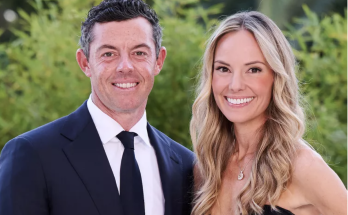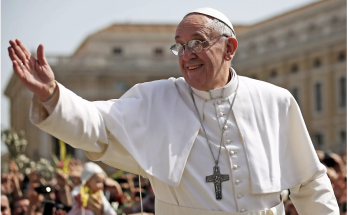The 2024 blockbuster film gave viewers an inside look into how the next pope is chosen
:max_bytes(150000):strip_icc():focal(764x150:766x152):format(webp)/conclave-080724-3-0cce0da48a774f2bb33ac5bbf3e68d3e.jpg)
The 2024 movie Conclave tells a fictional version of the real-life process of deciding on a new pope.
The film became a topic of conversation months after its release when Pope Francis died on April 21. After funeral processions are held for the late pope, the eligible cardinals will gather for the conclave to vote for the next pope 15 to 20 days after his death.
The Oscar-winning film gave viewers a look into the process of choosing a new leader of the Roman Catholic Church, but parts of the film were dramatized for storytelling purposes.
Conclave — which was nominated for the 2025 Best Picture Oscar — featured a star-studded ensemble cast that included Ralph Fiennes, Stanley Tucci, Isabella Rossellini and John Lithgow.
In the movie, Fiennes plays the dean of the College of Cardinals who organizes the eligible cardinals to meet at the Vatican in Rome and vote for the next pope in the Sistine Chapel. However, the process takes several turns when scandals about the leading candidates are exposed.
Here is what Conclave got right about the real-life process of choosing the next pope and what was altered for the Oscar-winning movie.
:max_bytes(150000):strip_icc():focal(719x165:721x167):format(webp)/conclave-movie-cardinals-sistine-chapel-042225-35ea432ffa2a42c5ba8a1cbf9d6ea253.jpg)
In Conclave, all of the eligible cardinals travel to Vatican City to sequester themselves inside the Vatican grounds after the pope dies. The fictionalized version is generally similar to the real process, which also bars the voters from communicating with the outside world in any form.
The Catholic Church takes this secrecy seriously and can excommunicate any cardinal who violates the rule.
“There isn’t supposed to be any information coming in from the outside world, or going out, that could sway the election in any way,” the film’s screenwriter Peter Straughan told USA Today in October 2024.
Conclave depicts the importance of confidentiality by showing Vatican security members sweeping the Sistine Chapel for listening devices and bugs.
Prior to the last conclave in 2013, the Associated Press reported that the security team did, in fact, check for any sort of listening device by using “jamming technology to block electronic communication.”
Do the cardinals really sleep, eat and live in the Vatican until they decide the next pope?
:max_bytes(150000):strip_icc():focal(736x205:738x207):format(webp)/conclave-movie-cardinals-secrecy-oath-042225-31350f00e1bd4897ad24d2c5116a5e2d.jpg)
After all the cardinals began sequestering in Conclave, they are shown praying, eating and sleeping in the same living quarters. The film highlights the dorms each cardinal resides in and the group cafeteria where nuns serve them.
In this way, the film is fairly accurate, as all of the voting cardinals — of which there are now 135 — stay at the Casa Santa Marta dormitory within the Vatican during the discussion and voting period, per NPR.
Just like in the film, the cardinals are allowed to discuss their decisions with each other before heading into the Sistine Chapel to cast their ballots.
Do nuns take care of the cardinals during the conclave?
:max_bytes(150000):strip_icc():focal(736x145:738x147):format(webp)/conclave-movie-isabella-rossellini-042225-3ad35c988574469790452019fcceaa42.jpg)
Conclave shows how a group of nuns serve the cardinals while they decide on the next pope. In reality, the depiction is mostly accurate, as the nuns from the Sistine Chapel are responsible for cooking, cleaning and ensuring the cardinals are comfortable during the voting process.
In 2013, the Sistine Chapel nuns prepared “meals of soup, spaghetti, small meat kebabs and boiled vegetables” for the cardinals, according to local Italian newspaper Corriere della Sera.
However, in Conclave, the nuns play a major role — with Rossellini even getting nominated for a Best Supporting Actress Oscar for her role as Sister Agnes.
In one fictional storyline, one of the cardinals sabotages a competing cardinal up for the papacy by purposely placing a nun there who had a secret child with him. Rossellini’s character gets involved by speaking with the nun and encourages her to share the information with Fiennes’ character. As a result of the scandals, both cardinals lose their coveted votes.
In reality, while the nuns often cannot help but overhear conversations, they are directed to respect the secrecy and are discouraged from playing any sort of role in the decision process.
While Kathleen Sprows Cummings, a history professor at Notre Dame, pointed out to The Hollywood Reporter in November 2024 that a nun would not be allowed in the cardinals’ sleeping quarters as Rossellini is in the film, she did say the movie’s portrayal of nuns was “emblematic.”
“They’re so easy to caricature, but Isabella Rossellini gives a wonderful portrayal of an intelligent woman that rings true,” she said. “What she says, about nuns seeing and hearing, is so emblematic of nuns and so beautiful.”
Is the voting process for the new pope similar to the one depicted in Conclave?
:max_bytes(150000):strip_icc():focal(748x162:750x164):format(webp)/conclave-movie-lucian-msamati-042225-51597d2c66604ef2b95039e9f75d3b37.jpg)
The Golden Globe-winning film shows several rounds of voting during which the cardinals gather in the Sistine Chapel and quietly write down the name of the one person whom they believe should be the next pope. The cardinals subsequently walk up to a desk with an oval urn on it, take a Latin oath and place their folded vote inside.
Afterwards, Fiennes’ character sits in front of everyone and quietly reads aloud the names everyone anonymously wrote down. If a two-thirds consensus is not reached, the group is dismissed and votes again later on.
The real-life process is fairly similar to the one portrayed in Conclave. Reverend Thomas Reese, a columnist at Religion News Service, told NPR, “The voting procedure was done very well.”
The cardinals can vote up to four times a day until two-thirds of the electorate submit the same name.
“The cardinals will lock themselves into the Sistine Chapel and discuss and vote on the next pope,” Bill Cavanaugh, an American Catholic theologian and professor of Catholic studies at DePaul University, told PEOPLE. “Not every cardinal can vote. Only cardinals who are under 80 can vote. And a papal candidate needs two-thirds of the vote of the voting cardinals to be elected.”
Does the color of the smoke really notify the public of the cardinals’ decision?
:max_bytes(150000):strip_icc():focal(722x154:724x156):format(webp)/conclave-movie-vatican-black-smoke-042225-e4da7639e46a406ab6cec8dbedc5ff35.jpg)
Just like in Conclave, after the cardinals place their votes into the urn, the ballots are lit on fire to inform the public whether or not they have chosen a new pope.
“After each vote, smoke is sent up the chimney and it’s black. If it’s black, it means they have not elected a pope,” Cummings, a history professor at Notre Dame, told PEOPLE.
Meanwhile, if it’s white, that “means that we have a new pope,” and people can expect an official announcement shortly afterwards. The new pope will later make his grand debut on the balcony of St. Peter’s Basilica overlooking St. Peter’s Square in Vatican City.
Is there one cardinal in charge of overseeing the conclave?
:max_bytes(150000):strip_icc():focal(504x139:506x141):format(webp)/conclave-movie-cardinal-giovanni-battista-re-042225-b5b68ce1ec754960b2b41b295ea9a5ed.jpg)
In Conclave, Fiennes plays the dean who was appointed to oversee the vote. The movie shows how he not only organizes and runs the conclave, but also how he discovers secrets about the frontrunners that would prevent them from getting the position.
Italian Cardinal Giovanni Battista Re was named the dean in 2020, but since he is 11 years older than the maximum voting age of 80, the Vatican’s secretary of state, Cardinal Pietro Parolin, will help run the election instead, per the Catholic News Agency.
In the meantime, the Carmelengo of the Holy Roman Church (whom Lithgow plays in the film) is the interim leader of the church who takes over the pope’s duties and also organizes the conclave, per The New York Times.
Pope Francis appointed Cardinal Kevin Farrell to the position in 2019. Cardinal Farrell immediately began his duties by announcing the death of Pope Francis on April 21 and starting to organize the late pope’s funeral.
Was Conclave really filmed inside the Vatican?
:max_bytes(150000):strip_icc():focal(756x157:758x159):format(webp)/conclave-movie-brian-f-obyrne-ralph-fiennes-042225-e9543d2dd2bb4bc389e0fbf798a74523.jpg)
Although the real-life voting process takes place in the Sistine Chapel, Conclave was unable to film there or in the Vatican due to their strict no-photography rules.
After the writers and set creators got a private tour of the Vatican, per CNN, they built a replica in just a few months.



